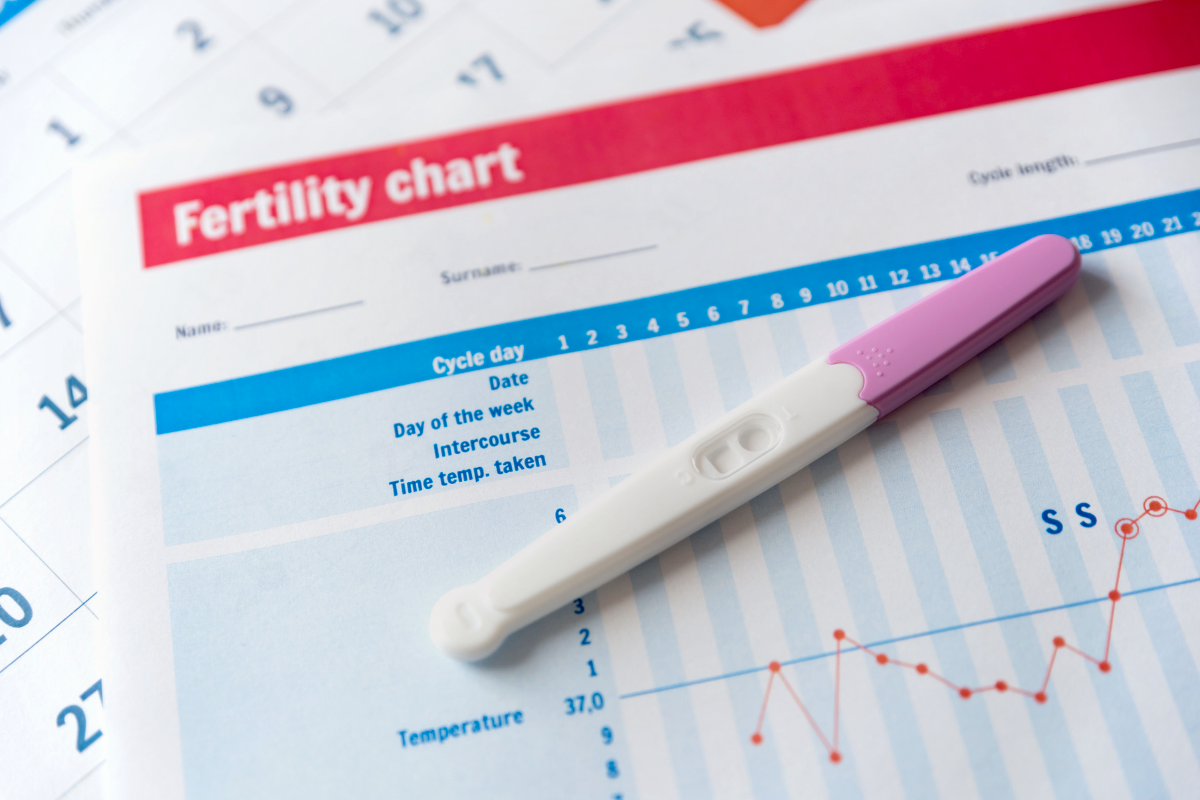Too few people get any fertility education. Much of “health class” is focused on preventing a pregnancy, and so when it comes time to try to conceive, it can feel like you get too little information too late.
Fertility is an important part of our overall health. Understanding how it works can help you feel more prepared in making important decisions about your body.

So let’s get into some of the basics:
- What is fertility?
- How does fertilization work?
- What causes infertility?
This is a general overview for anyone trying to conceive or navigating infertility and fertility treatments so you can have more-informed conversations with your doctors.
What is fertility?
Fertility has two distinct definitions.
In the first definition, fertility refers to the actual production of children (“reproductive performance,” so to speak). You may have heard that the fertility rate is decreasing globally. That does not mean that the ability of the global human population to have children is going down, nor does it mean that the rate of infertility is going up. It means that, for reasons that are complicated, people are having fewer children than they used to.
In an everyday sense, fertility is also the ability to have children. For most people, particularly women, fertility declines with age. That’s because the number of eggs peaks well before women can use them; when you are about a 20-week-old fetus, you have 6 million to 7 million eggs. The egg count decreases so much that by the time you’re born, that number is now 1 million to 2 million, and at puberty you’re looking at around 500,000.
But these numbers are only part of the story. The quality of the eggs also decreases with age, and this matters more. Egg quality and age is actually a “J-shaped” curve, with rates of aneuploidy (embryos with an abnormal number of chromosomes) during the late teens being similar to the rates seen in the late 40s. Rates of aneuploidy are the main reason it becomes more difficult to achieve and sustain a pregnancy with age. Aneuploid embryos are less likely to implant and more likely to lead to miscarriage.
A woman’s peak fertility is in her early 20s, and by the time her early 30s arrive, there has already been a decline. Fertility begins to decline more rapidly around ages 35 to 37, though many people still get pregnant around those ages. This study found that 78% of women ages 35 to 40 were able to conceive within a year, compared with 84% of women ages 20 to 34. In other words, your fertility does not fall off a cliff after age 35.
For men, contrary to popular belief, age also has an effect. While men continue to produce sperm throughout their life, semen analysis parameters worsen across every measure with age, and there is a noticeable decrease in sperm quality as they enter their 40s.
While things like egg freezing and IVF seem to promise control over your fertility, in reality there is little you can do to prevent reproductive aging. However, there are lifestyle factors that can speed it up — namely, smoking — so it is a good idea to avoid smoking if you plan to conceive.
How does fertilization work?
In order to establish a pregnancy, you need an egg, sperm, and a place for the embryo to grow (the uterus or, in the case of IVF, a lab). The egg grows in the ovaries in small cysts called follicles and is released into the fallopian tube in the first half of the menstrual cycle (called ovulation). Once you ovulate, the egg has less than 24 hours to be fertilized by sperm.

Ideally, when the egg is released, the sperm are there waiting for the egg. Once it is in sight, they all “compete” to be the first one to penetrate the egg, resulting in a fertilized egg, or embryo. After this, the embryo travels from the fallopian tube to the uterus to implant. The embryo typically implants 8 to 10 days after fertilization.
What causes infertility?
Infertility is the inability to achieve a successful pregnancy. This could be due to anything along the path of ovulating an egg to the implantation of an embryo, but it could also be due to factors that science hasn’t yet identified. Unfortunately, there is a lot that is unknown about what causes infertility, but let’s start with what we do know.
When it comes to reproductive medicine, doctors understand more about women, although male factor infertility is also common. Aside from age, the causes of infertility in women are divided into a few categories: ovulatory dysfunction, tubal factor, and uterine factor:
- Ovulatory dysfunction: The data we have suggests that ovulatory dysfunction is the most common cause of female infertility. Ovulatory dysfunction refers to a group of disorders that cause either irregular or absent ovulation, called anovulation. You can see why this may cause issues: if you aren’t regularly ovulating, it is difficult or impossible to time sex to give the highest chance of success, and if you’re not ovulating then there won’t be an egg to fertilize. The most common cause of ovulatory dysfunction is polycystic ovary syndrome (PCOS), but it can also be caused by hormonal imbalances.
- Tubal factor: Untreated pelvic infections, such as gonorrhea and chlamydia, pelvic inflammatory disease (which in turn can also be caused by gonorrhea and chlamydia), and even ruptured appendicitis can cause scarring of the fallopian tubes, which prevents them from functioning properly. Endometriosis can also cause scarring of the fallopian tubes and contribute to infertility.
- Uterine factor: Uterine fibroids, polyps, and congenital malformations of the uterus such as a uterine septum can make it more difficult for an embryo to successfully implant and grow.
For men, low sperm counts are the most common form of male factor infertility. Low sperm counts can be caused by a variety of factors, including genetics, developmental disorders, taking testosterone supplements, and varicoceles (enlarged veins in the testicle).
Cancer and chronic medical conditions like hypothyroidism and diabetes can also cause infertility. All of this underscores why it is extremely important to have regular checkups with your primary care physician, regular STI screening, and to work with any necessary specialists to discuss chronic medical conditions prior to a pregnancy, if possible.
The bottom line
- Fertility decline is a normal part of aging. For women, this is due to worsening egg quality and a decreasing number of eggs. For men, semen analysis parameters worsen with age.
- In order to establish a pregnancy, you need an egg, sperm, open fallopian tubes, and a place for the embryo to grow.
- For women, infertility is most often caused by pelvic infections or scarring of the fallopian tubes, polyps or fibroids in the uterus, uterine congenital malformations, and anovulation. Low sperm counts are the most common form of male factor infertility.
We recognize that readers of ParentData identify in different ways — read more about our approach to gender-inclusive language here.
Community Guidelines












Log in